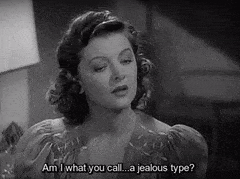- Messages
- 17,462
- Location
- New York City
Given that newspaper comics in 1941 are "family entertainment," two things stand out -- I never cease to be amazed by exactly how much Caniff gets away with, and I never cease to be amazed at how cleverly he implies what he can't.
The pip of all time was in 1939, when April Kane was captured by a cross-dressing French lesbian gold smuggler named Sanjak, who left absolutely no question of what she had in mind for her captive:
View attachment 325378
The implications here are exceedingly obvious, and that Caniff was able to get away with this situation in 1939 -- when the movies were hamstrung by the Code, and radio was under complete censorship by sponsors and networks -- is nothing short of astounding. Not that he didn't entirely avoid picayune interference with his strip -- witness the prissy insistence of the News Syndicate that he never refer to Japan or Germany by name -- but he got away with far more than he could have in any other popular-culture medium of the time.
There is absolutely no question of what happened between Raven and Dude, the only question now is have they managed to work it out since we last saw them, or have they killed each other? I look forward to finding out.
I, too, am ready for Pat, Raven and Dude and, even, the DL to return - and, of course, the lovely and impressive Hu Shee. But I am really enjoying Burma; she's a heck of an addition to the crew. Poor April, honestly, she doesn't belong on the field with Raven, Burma, the DL, etc.
Lizzie, as always, is spot on Re the censors and the comic strips having the most maneuvering room. That said, everyone once in awhile, something surprising got slipped into the movies.
I watched 1937's "Ever Since Eve" a month or so ago (posted about it here: #28564) and it has, remember this is a code-era movie, a surprising amount of gay, lesbian and gender-bending characters right out in the open, making not too-subtle references ("motorcycle girls of the Everglades") and cross dressing, etc., but of course, never directly saying what it is about.
But it ain't hidden. Also, in this case, it wasn't even central to the plot. It was almost as if someone at Warner Bros. wanted to see what he/she could get away with, which in this case, was a surprisingly large amount of stuff.
Yet, as Lizzie noted, it's the comic strips where it really happens. If somebody new to all this wanted a better view of the '30s and '40s culture than the movies made under the code, I'd recommend, pre-code movies, comic strips and popular selling fiction books. So much is there. Sometimes it's right there and sometimes it's just below the surface, but you quickly pick up the way to read and watch this stuff.











